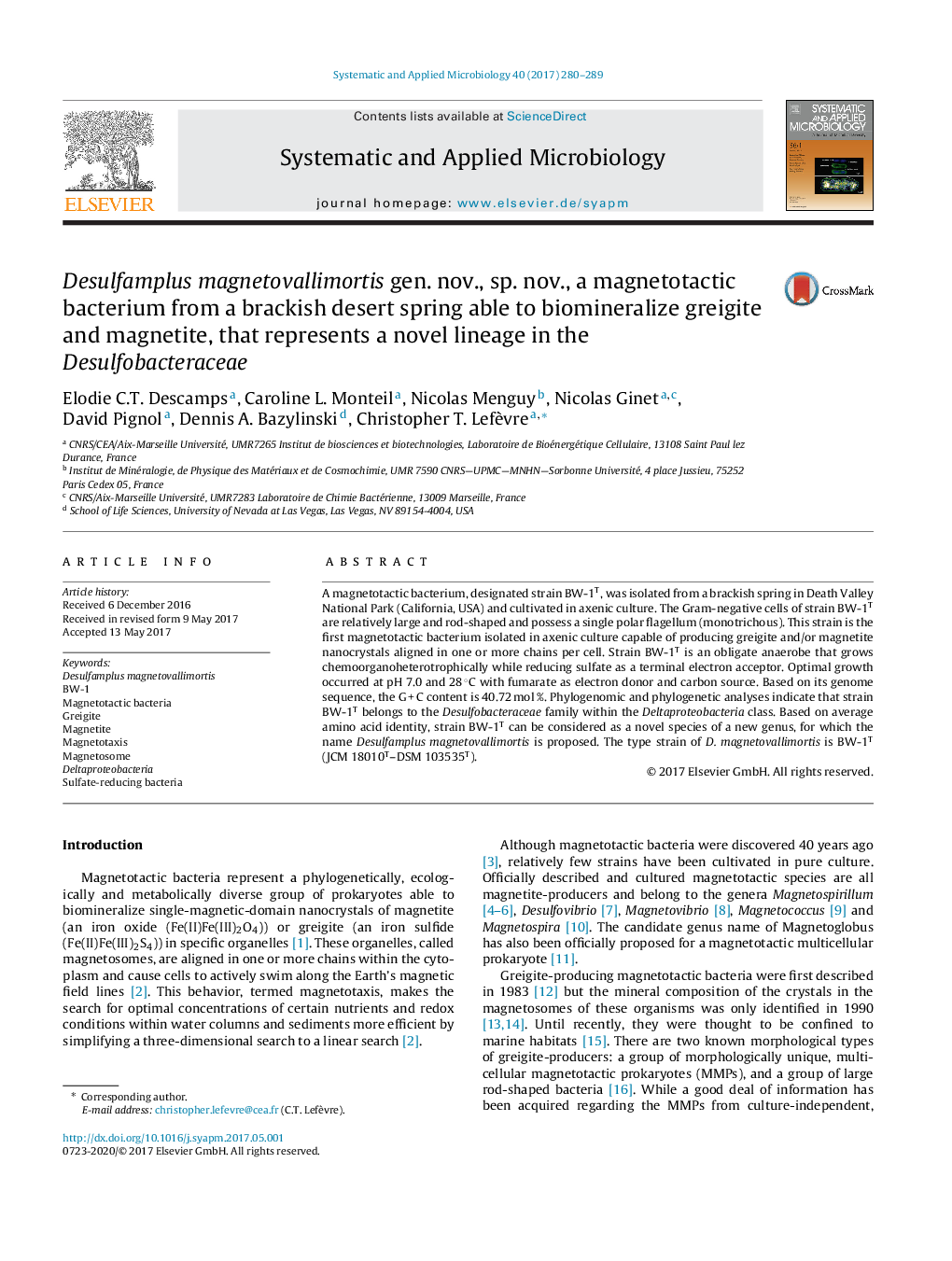| Article ID | Journal | Published Year | Pages | File Type |
|---|---|---|---|---|
| 5519121 | Systematic and Applied Microbiology | 2017 | 10 Pages |
A magnetotactic bacterium, designated strain BW-1T, was isolated from a brackish spring in Death Valley National Park (California, USA) and cultivated in axenic culture. The Gram-negative cells of strain BW-1T are relatively large and rod-shaped and possess a single polar flagellum (monotrichous). This strain is the first magnetotactic bacterium isolated in axenic culture capable of producing greigite and/or magnetite nanocrystals aligned in one or more chains per cell. Strain BW-1T is an obligate anaerobe that grows chemoorganoheterotrophically while reducing sulfate as a terminal electron acceptor. Optimal growth occurred at pH 7.0 and 28 °C with fumarate as electron donor and carbon source. Based on its genome sequence, the G + C content is 40.72 mol %. Phylogenomic and phylogenetic analyses indicate that strain BW-1T belongs to the Desulfobacteraceae family within the Deltaproteobacteria class. Based on average amino acid identity, strain BW-1T can be considered as a novel species of a new genus, for which the name Desulfamplus magnetovallimortis is proposed. The type strain of D. magnetovallimortis is BW-1T (JCM 18010T-DSM 103535T).
